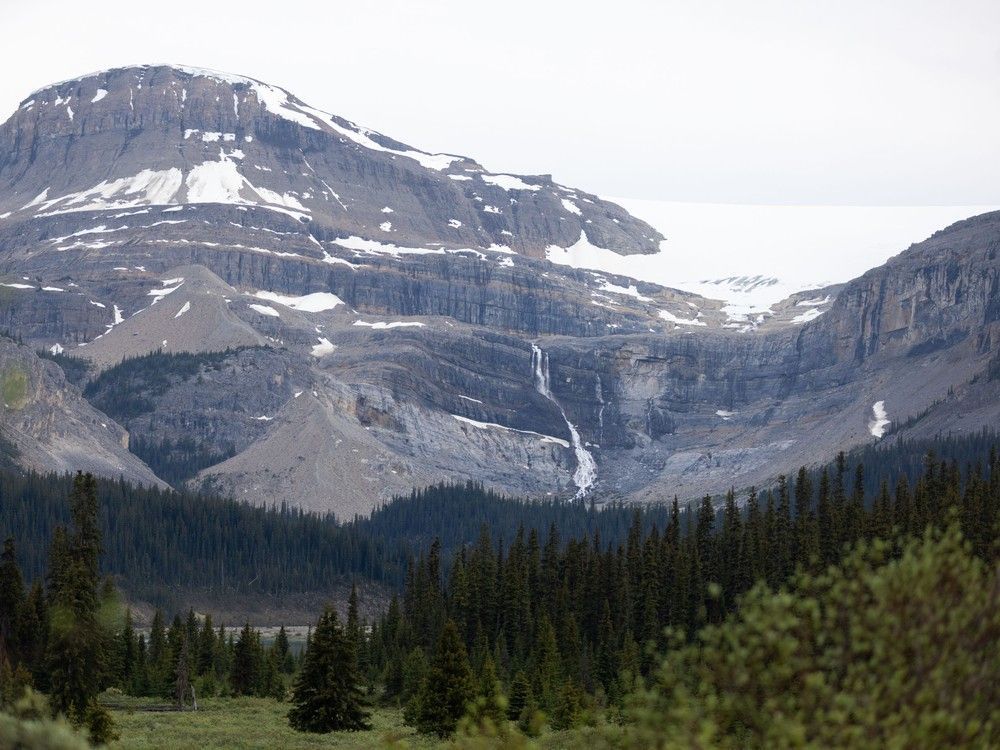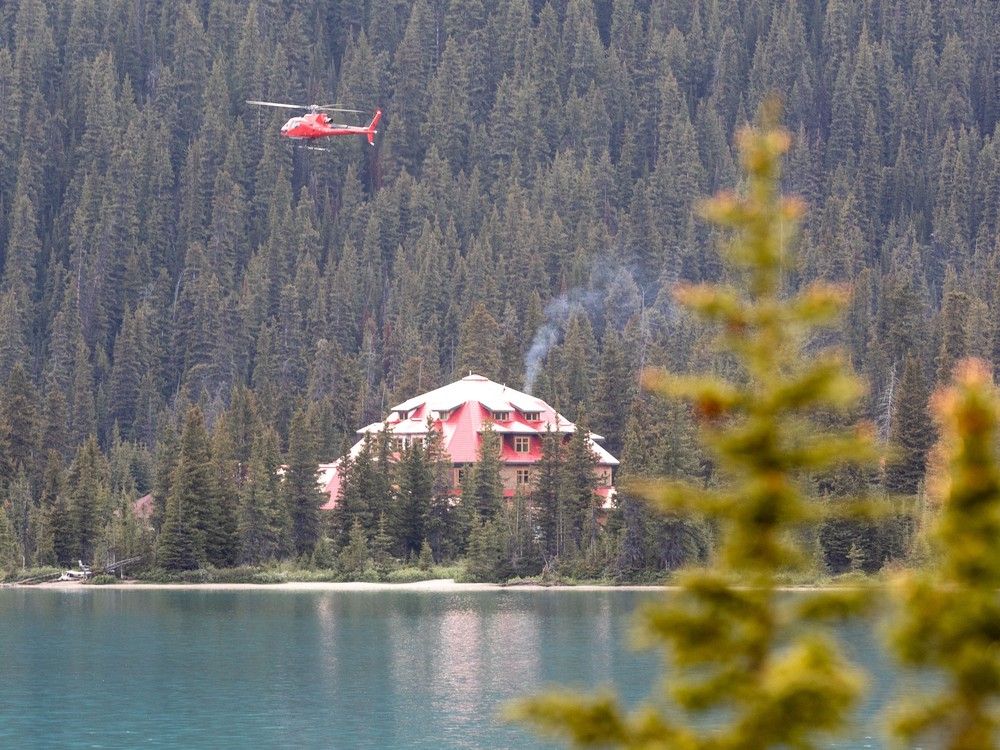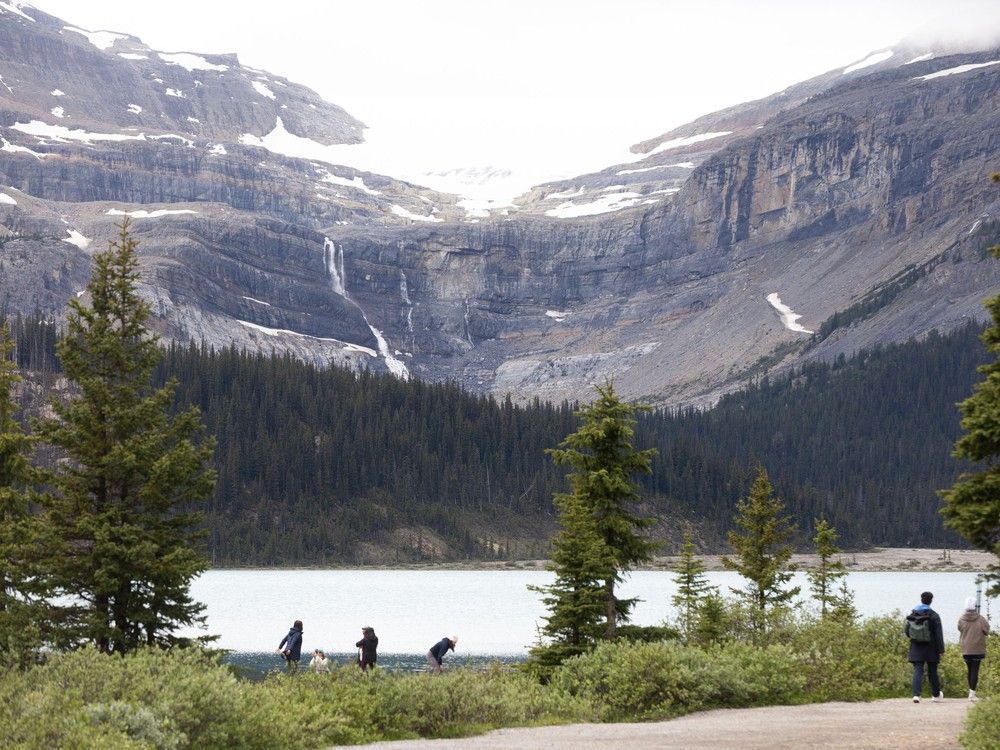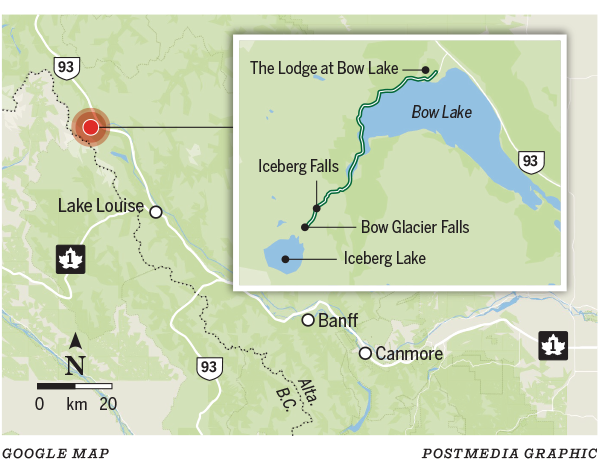
A rock slide in Banff National Park claimed two lives on Thursday, including a senior woman from Calgary.
RCMP and Parks Canada officials said Friday afternoon that their search for victims went on through the night and into the morning at Bow Glacier Falls.
The first death was confirmed to be a 70-year-old woman from Calgary, Jutta Hinrichs, while the second hiker’s body was recovered early Friday morning. That person had not been identified by Friday afternoon.
“RCMP are notifying their next of kin and no further information is available at this time,” the agencies said in a joint statement.
“At this time, there are no additional persons reported missing and no additional unidentified vehicles at the trailhead located at Bow Lake.”
Officials added that three injured hikers taken to hospital by STARS air ambulance and ground ambulance Thursday were all in stable condition. In total, 13 visibly injured visitors or non-injured bystanders were evacuated from the scene.
There were ultimately 100 personnel involved in the response effort, including crews from several first response agencies.
As part of search efforts, Canada Task Force 2 — a natural disaster response team — conducted infrared flights, through their partners in the Calgary Police Service, to complete a thorough assessment of the area.
Meanwhile, a geotechnical engineer from Canada Task Force 2 conducted a slope stability assessment.
Francois Masse, Parks Canada superintendent for the Lake Louise, Yoho and Kootenay field unit, said that assessment revealed the rockfall was caused by natural processes in mountain areas.
“Sadly, this extremely rare event appears to have been neither preventable nor predictable,” he told reporters.
“Parks Canada and the RCMP extend our deepest condolences to the families and friends of the two individuals who lost their lives. Our thoughts also remain with those in hospital and we hope for their full recovery.”

Parks Canada received the first reports of a serious rockfall at Bow Glacier Falls , west of the Icefields Parkway (Highway 93 N.) near Bow Lake, at 1:30 p.m. on Thursday. The area is about 37 kilometres north of Lake Louise in Banff National Park.
The first victim was confirmed as Jutta Hinrichs, a retired occupational therapist from Calgary and a clinical education co-ordinator for the University of Alberta. She was a member of a local hikers group called Slow and Steady Hikers, some of whose members were caught in the rock slide.
In a statement, the University of Alberta said Hinrichs was a dedicated leader and educator in the faculty of rehabilitation medicine’s department of occupational therapy from September 2012 until her retirement last July.
The university said Hinrichs was integral to developing a southern Alberta satellite for the department, using her clinical and leadership experience in the Calgary area to grow the department.
“As an educator, Jutta nurtured many students, preceptors and clinicians to flourish and grow,” the university said. “That her work continues to enrich the tapestry of occupational therapy in Alberta is her legacy.
“The University of Alberta offers its heartfelt sympathy to Jutta’s family, friends, former students and colleagues as they navigate the profound loss of their loved one.”
Bow Lake and the trail to Bow Hut have reopened, according to RCMP and Parks Canada, but Bow Glacier Falls remains closed to all visitors. A no-fly zone enacted Thursday remains in place.
Masse said that due to remaining instability in the rock face, the hiking area around Bow Glacier Falls will remain closed for the foreseeable future.
Postmedia journalists at the scene reported that visitors continued to flow in and out of the viewpoint at Bow Lake throughout Friday.

Alexandra Serova was in the area Friday with a friend visiting from Montreal and said she usually visits the spot twice a year and had planned to come the day of the rockslide, but changed the plan to visit other lakes.
“We are fortunate,” Serova said. “We feel the protection from God.”
Despite the rockslide they still decided to do the hike.
“My friend came here for only four days and we have no other choice, no other days,” she said.
An employee of the Lodge at Bow Lake, which is within viewing distance of where the incident occurred, told Postmedia he didn’t witness the rockfall, but did see the large dust plumes that resulted from it.
The rock wall in that part of the mountain is fairly unstable and rock slides occur occasionally, added the employee, who asked to remain anonymous.
“At first, I thought it was going to be a small one. I didn’t really know,” he said.
“There were people who came into the cafe after it happened who had videos of it on the trail, so they showed us some of the videos and we just notified Parks dispatch right away.”
The Icefields Parkway remained open, but with potential intermittent, short-term traffic stoppages in the vicinity of the incident.
The RCMP also noted that people who were Alpine Club of Canada guests, staying at Bow Hut, were all reported safe. Those people will be exiting the area as per the planned route and schedule.
They also note Banff National Park is open and safe to visit.
An anonymous witness of the rockfall, posting on an online message board Thursday night, said he and his wife left the area just minutes before the slide occurred.
“My wife and I took a photo at 12:31 right at the base of the waterfall, we were very close to it,” the witness said in a written exchange with Postmedia. “She asked if I was ready to leave and we decided to make our way back.”
On their descent, the witness said they heard a loud ‘clap,’ which he figured was something breaking higher up the mountain.
“Shortly after that initial noise, we continued on and heard a much louder ‘clap’ or ‘lighting strike’ sound, and saw a massive rock falling next to the waterfall immediately proceeded with a smaller rock breaking off,” he wrote.
“There was immediately a massive dust cloud and people running away. My wife and I knew we had to get out in fear of more rock slides happening or worse.”
A University of Calgary geoscience professor said such incidents are more common in the Rocky Mountains than many probably realize. That’s due to the steepness of the mountain slopes, as well as the prevalence of limestone, which is a porous type of rock, thus allowing water to saturate it, making it heavier.
“Ultimately, the cause is gravity,” said Dr. Dan Shugar. “Mountains get built up over geological time and then they get torn down. That’s an entirely natural process.”
Based on videos and photos of the incident, Shugar predicts the fall measured a few tens of metres wide and 10 metres deep, amounting to a volume ranging from 5,000 to 10,000 cubic metres.
“Rockfalls of this size, I think, would routinely happen in valleys where hikers, people and infrastructure don’t exist and we don’t even know about them, because they’re too small to measure on any seismometer,” he said.
“The total fall height was not very big, and so the plumes of dust that were evident in the various videos are surprising.”
He figures the large size of the dust plumes was due to the falling rock rapidly disintegrating.

This was the second rock slide to hit this part of the Bow Glacier Falls in recent years. A smaller slide occurred in August 2023, when a section of rock wall broke off beside the falls and crashed down the mountainside, injuring numerous hikers.
A repeat incident is likely a coincidence, according to Shugar.
However, he acknowledged this particular mountain’s slope is steep, making it more prone to rockfalls.
“There’s lots of not very competent rock that’s just ready to come down,” he said. “That’s not to say that slope is necessarily particularly dangerous and people shouldn’t have hiked there, it’s just what happens in the mountains.”
Of the photos he’s seen since the slide, Shugar added the “scar” left behind afterward revealed a big roof or overhang — something he feels is concerning.
“I would want to know if that roof is stable, especially as we’re expecting 150 millimetres of rain in the next 48 hours,” he said.
— With files from Hiren Mansukhani, Brent Calver
More to come…..